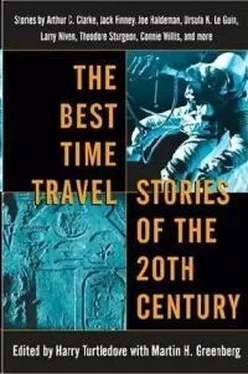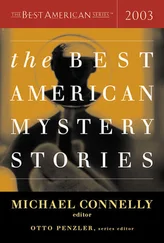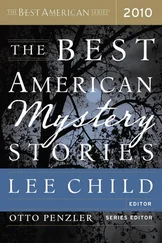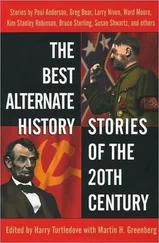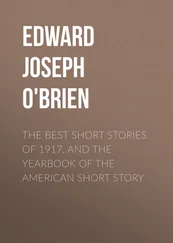Мартин Гринберг - The Best Time Travel Stories of the 20th Century
Здесь есть возможность читать онлайн «Мартин Гринберг - The Best Time Travel Stories of the 20th Century» весь текст электронной книги совершенно бесплатно (целиком полную версию без сокращений). В некоторых случаях можно слушать аудио, скачать через торрент в формате fb2 и присутствует краткое содержание. Год выпуска: 2005, ISBN: 2005, Издательство: Del Rey / Ballantine, Жанр: Фантастика и фэнтези, на английском языке. Описание произведения, (предисловие) а так же отзывы посетителей доступны на портале библиотеки ЛибКат.
- Название:The Best Time Travel Stories of the 20th Century
- Автор:
- Издательство:Del Rey / Ballantine
- Жанр:
- Год:2005
- ISBN:0-345-46094-4
- Рейтинг книги:3 / 5. Голосов: 1
-
Избранное:Добавить в избранное
- Отзывы:
-
Ваша оценка:
- 60
- 1
- 2
- 3
- 4
- 5
The Best Time Travel Stories of the 20th Century: краткое содержание, описание и аннотация
Предлагаем к чтению аннотацию, описание, краткое содержание или предисловие (зависит от того, что написал сам автор книги «The Best Time Travel Stories of the 20th Century»). Если вы не нашли необходимую информацию о книге — напишите в комментариях, мы постараемся отыскать её.
The Best Time Travel Stories of the 20th Century — читать онлайн бесплатно полную книгу (весь текст) целиком
Ниже представлен текст книги, разбитый по страницам. Система сохранения места последней прочитанной страницы, позволяет с удобством читать онлайн бесплатно книгу «The Best Time Travel Stories of the 20th Century», без необходимости каждый раз заново искать на чём Вы остановились. Поставьте закладку, и сможете в любой момент перейти на страницу, на которой закончили чтение.
Интервал:
Закладка:
I could and did correct Tubdu: “Only in her part of it. She told me there’s lots of parts of it where they do.” I felt obscurely defensive of my mother, though Tubdu spoke without a shadow of malice or contempt; she adored Isako. She had fallen in love with her “the moment I saw her—that black hair! that mouth!”—and simply found it endearingly funny that such a woman could have expected to marry only a man.
“I understand,” Tubdu hastened to assure me. “I know—on Terra it’s different, their fertility was damaged, they have to think about marrying for children. And they marry in twos, too. Oh, poor Isako! How strange it must have seemed to her! I remember how she looked at me—” And off she went again into what we children called The Great Giggle, her joyous, silent, seismic laughter.
To those unfamiliar with our customs I should explain that on O, a world with a low, stable human population and an ancient climax technology, certain social arrangements are almost universal. The dispersed village, an association of farms, rather than the city or state, is the basic social unit. The population consists of two halves or moieties. A child is born into its mother’s moiety, so that all ki’O (except the mountain folk of Ennik) belong either to the Morning People, whose time is from midnight to noon, or the Evening People, whose time is from noon to midnight. The sacred origins and functions of the moieties are recalled in the Discussions and the Plays and in the services at every farm shrine. The original social function of the moiety was probably to structure exogamy into marriage and so discourage inbreeding in isolated farmholds, since one can have sex with or marry only a person of the other moiety. The rule is severely reinforced. Transgressions, which of course occur, are met with shame, contempt, and ostracism. One’s identity as a Morning or an Evening Person is as deeply and intimately part of oneself as one’s gender, and has quite as much to do with one’s sexual life.
A ki’O marriage, called a sedoretu, consists of a Morning woman and man and an Evening woman and man; the heterosexual pairs are called Morning and Evening according to the woman’s moiety; the homosexual pairs are called Day—the two women—and Night—the two men.
So rigidly structured a marriage, where each of four people must be sexually compatible with two of the others while never having sex with the fourth—clearly this takes some arranging. Making sedoretu is a major occupation of my people. Experimenting is encouraged; foursomes form and dissolve, couples “try on” other couples, mixing and matching. Brokers, traditionally elderly widowers, go about among the farmholds of the dispersed villages, arranging meetings, setting up field dances, serving as universal confidants. Many marriages begin as a love match of one couple, either homosexual or heterosexual, to which another pair or two separate people become attached. Many marriages are brokered or arranged by the village elders from beginning to end. To listen to the old people under the village great tree making a sedoretu is like watching a master game of chess or tidhe. “If that Evening boy at Erdup were to meet young Tobo during the flour-processing at Gad’d...” “Isn’t Hodin’n of the Oto Morning a programmer? They could use a programmer at Erdup....” The dowry a prospective bride or groom can offer is their skill, or their home farm. Otherwise undesired people may be chosen and honored for the knowledge or the property they bring to a marriage. The farmhold, in turn, wants its new members to be agreeable and useful. There is no end to the making of marriages on O. I should say that all in all they give as much satisfaction as any other arrangement to the participants, and a good deal more to the marriage-makers.
Of course many people never marry. Scholars, wandering Discussers, itinerant artists and experts, and specialists in the Centers seldom want to fit themselves into the massive permanence of a farmhold sedoretu. Many people attach themselves to a brother’s or sister’s marriage as aunt or uncle, a position with limited, clearly defined responsibilities; they can have sex with either or both spouses of the other moiety, thus sometimes increasing the sedoretu from four to seven or eight. Children of that relationship are called cousins. The children of one mother are brothers or sisters to one another; the children of the Morning and the children of the Evening are germanes. Brothers, sisters, and first cousins may not marry, but germanes may. In some less conservative parts of O germane marriages are looked at askance, but they are common and respected in my region.
My father was a Morning man of Udan Farmhold of Derdan’nad Village in the hill region of the Northwest Watershed of the Saduun River, on Oket, the smallest of the six continents of O. The village comprises seventy-seven farmholds, in a deeply rolling, stream-cut region of fields and forests on the watershed of the Oro, a tributary of the wide Saduun. It is fertile, pleasant country, with views west to the Coast Range and south to the great floodplains of the Saduun and the gleam of the sea beyond. The Oro is a wide, lively, noisy river full of fish and children. I spent my childhood in or on or by the Oro, which runs through Udan so near the house that you can hear its voice all night, the rush and hiss of the water and the deep drumbeats of rocks rolled in its current. It is shallow and quite dangerous. We all learned to swim very young in a quiet bay dug out as a swimming pool, and later to handle rowboats and kayaks in the swift current full of rocks and rapids. Fishing was one of the children’s responsibilities. I liked to spear the fat, beady-eyed, blue ochid; I would stand heroic on a slippery boulder in midstream, the long spear poised to strike. I was good at it. But my germane Isidri, while I was prancing about with my spear, would slip into the water and catch six or seven ochid with her bare hands. She could catch eels and even the darting ei. I never could do it. “You just sort of move with the water and get transparent,” she said. She could stay underwater longer than any of us, so long you were sure she had drowned. “She’s too bad to drown,” her mother, Tubdu, proclaimed. “You can’t drown really bad people. They always bob up again.”
Tubdu, the Morning wife, had two children with her husband Kap: Isidri, a year older than me, and Suudi, three years younger. Children of the Morning, they were my germanes, as was Cousin Had’d, Tubdu’s son with Kap’s brother Uncle Tobo. On the Evening side there were two children, myself and my younger sister. She was named Koneko, an old name in Oket, which has also a meaning in my mother’s Terran language: “kitten,” the young of the wonderful animal “cat” with the round back and the round eyes. Koneko, four years younger than me, was indeed round and silky like a baby animal, but her eyes were like my mother’s, long, with lids that went up towards the temple, like the soft sheaths of flowers before they open. She staggered around after me, calling, “Deo! Deo! Wait!”—while I ran after fleet, fearless, ever-vanishing Isidri, calling, “Sidi! Sidi! Wait!”
When we were older, Isidri and I were inseparable companions, while Suudi, Koneko, and Cousin Had’d made a trinity, usually coated with mud, splotched with scabs, and in some kind of trouble—gates left open so the yamas got into the crops, hay spoiled by being jumped on, fruit stolen, battles with the children from Drehe Farmhold. “Bad, bad,” Tubdu would say. “None of ’em will ever drown!” And she would shake with her silent laughter.
My father Dohedri was a hardworking man, handsome, silent, and aloof. I think his insistence on bringing a foreigner into the tight-woven fabric of village and farm life, conservative and suspicious and full of old knots and tangles of passions and jealousies, had added anxiety to a temperament already serious. Other ki’O had married foreigners, of course, but almost always in a “foreign marriage,” a pairing; and such couples usually lived in one of the Centers, where all kinds of untraditional arrangements were common, even (so the village gossips hissed under the great tree) incestuous couplings between two Morning people! two Evening people!—Or such pairs would leave O to live on Hain, or would cut all ties to all homes and become Mobiles on the NAFAL ships, only touching different worlds at different moments and then off again into an endless future with no past.
Читать дальшеИнтервал:
Закладка:
Похожие книги на «The Best Time Travel Stories of the 20th Century»
Представляем Вашему вниманию похожие книги на «The Best Time Travel Stories of the 20th Century» списком для выбора. Мы отобрали схожую по названию и смыслу литературу в надежде предоставить читателям больше вариантов отыскать новые, интересные, ещё непрочитанные произведения.
Обсуждение, отзывы о книге «The Best Time Travel Stories of the 20th Century» и просто собственные мнения читателей. Оставьте ваши комментарии, напишите, что Вы думаете о произведении, его смысле или главных героях. Укажите что конкретно понравилось, а что нет, и почему Вы так считаете.
